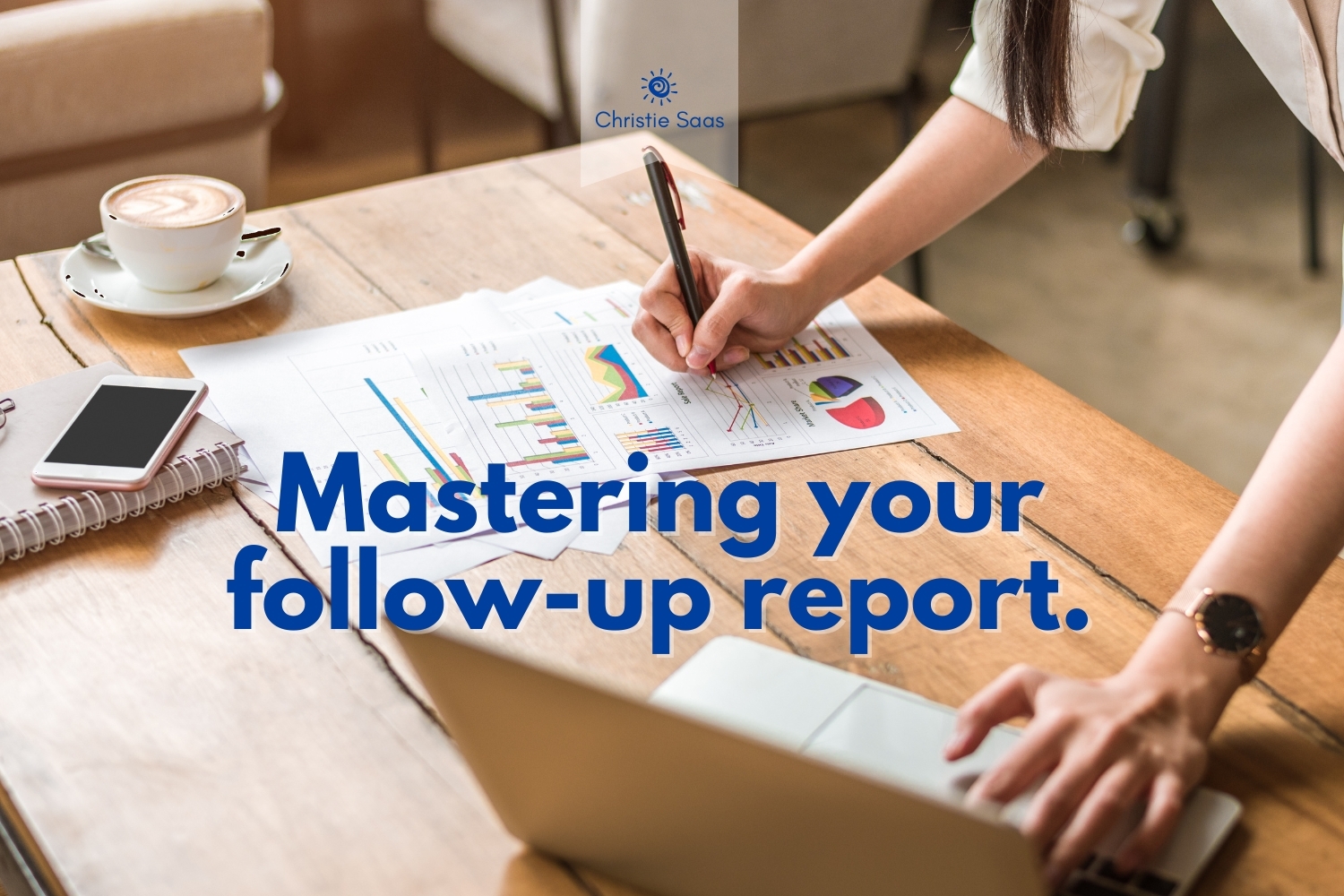Mastering your follow-up report

Your non-profit received a grant. Congratulations! Grant writing is a lot of hard work and succeeding in the application process is no small task. In the excitement of running a new program and paying the bills, you might find time has gone by so quickly and you are not as prepared to write the funding follow-up report as you would like.
Grants are complicated.
Grant funding is so very different from sponsorships. It isn’t enough to send photos, a kind thank you note, and a few stats. Grants are much more complex. The funder wants to know if the money they provided has helped them reach their own goals, so they ask questions about impact, barriers, and demographics. Yikes! I know that moment when you feel a little panicked and wonder if you have the information to answer all the questions.
You do have the information, and even if your program is finished, there is a way to build a powerhouse data gathering tool that you can use to write amazing follow-up reports grant after grant.
We’re making a map.
We’re going to build a follow-up map. No, you don’t need any special cartography skills, a simple spread sheet will do the trick.
COLUMN #1 – OFFICIAL FOLLOW-UP QUESTION
Start by listing all the questions that the follow-up report is asking. Use a new cell for each question. You will likely have received the follow-up report questions when you learned you were successful in receiving the grant. Missed that part? Give the funder a call and ask for another copy.
COLUMN #2 – YOUR INTERPRETATION
Now I want you to spend a little time (and maybe assisted by an iced coffee and 3 red licorice for energy) and I want to read and interpret each of the follow-up questions. Ask yourself, what is the funder really asking if you were to re-write it in everyday language. Trust your gut and in the cell beside the original question, write a very short sentence in your own words. If you are feeling really, really, stuck, go back to the application you wrote. You very likely addressed this information in your answers to the application questions.
OK, you’ve finished two columns of information, the question in the follow-up report, and your interpretation of that question in more everyday language. You are making good progress, keep going.
COLUMN #3 – DATA SOURCES
Going through the list another time, I want you to read the answers you wrote, and decide how you are going to collect that information. Pick one method to gather the data you will need to answer your interpretation of the follow-up question.
You can choose from any source that work for you. To get you started, here are some that I like to use:
- Registration form for the program, if applicable.
- Observation of the program, by you, your team, or someone else.
- Questions you ask program participants, during the program.
- Questions you ask program participants, after the program.
- Etc.
5 Examples
Example #1:
- Official Follow-Up Question: How many youths participated in your program?
- Your Interpretation: Number of boys and girls ages 15-18.
- Data Source: We will ask program participants to indicate their age on the registration form.
Example #2:
- Official Follow-Up Question: What were the outcomes of your project?
- Your Interpretation: What changed for the better, after the project was finished?
- Data Source: Staff analysis. We will have a staff meeting and discuss 5 ideas for what’s better after the program.
Example #3:
- Official Follow-Up Question: What partnerships were created during the program?
- Your Interpretation: Who did we work with to deliver this program to the participants? (leaders, vendors, sponsors, other non-profits)
- Data Source: Staff answer. The program lead will make a list of all the partners.
Example #4:
- Official Follow-Up Question: How did your program benefit participants?
- Your Interpretation: What did participants learn?
- Data Source: Evaluation form after the workshop. We will ask participants to tell us how they will use what they learned.
Example #5:
- Official Follow-Up Question: What impact did your program have?
- Your Interpretation: How are participants feeling about the program a month later?
- Data Source: Email. The program team will email each participant one month after the program and ask them if they feel the information they learned was valuable, and how they are using what they learned.
Pulling it all together.
Once all data sources have been decided, you can assign the task of collecting that information and having it reported back to you. If another staffer is assigned to collect the data, you can set a schedule for when it will be reported to you. You might decide you will track this in your follow-up map, for easier reference – a 4th column noting something like ‘Susan will email the results by June 10th.’
As the program finishes up, you will be receiving more and more data and begin to find your rhythm for collecting information in a way that works best for you. It might be a collection of well-organized files, or it might be simply pasting the data right into the follow-up map. Now, no matter who is handling the task of collecting specific data, it all eventually is reported back to you, for the follow-up report.
Suddenly your non-profit has a solid reputation for impactful work.
Grant writing follow-up reports are one of the most intimidating documents a non-profit executive director will write. Even the application is easier! You could wait until after the funding has been spent, the program finished, and cobble together a bunch of bits and pieces from different places, hoping it will be enough to satisfy the funder that you spent their money responsibly.
Instead, you could start to build your grant writing follow-up map. One of the best parts of the map is that as you apply for new grants, you will find that you are already collecting similar data to provide the follow-up answer. The more you build your follow-up data map, the easier it gets to write follow-up reports.
Oh, and there are two bonus benefits. (1) You will have a collection of meaningful data that you can use in other ways, such as your annual report, or promotional material. (2) You will have a collection of meaningful data that will make it much easier to write other grant applications in the future.
Your grant writing follow-up map can very quickly build into a gold mine of proof that your non-profit is very serious about the grant funding it receives and the work it undertakes.
Your turn.
Your turn. What’s your method for writing a grant follow-up report? Do you thoughtfully gather data at all steps during a project? Or do you wing it, and submit a follow-up that you know is a little embarrassing? Be honest and tell me. I want to know! Please use the form on the side of the page to let me know, ..or send me an email, ..or message me on socials.
-Christie
…
Hi, I'm Christie. I help executive directors develop the systems and processes needed to run a non-profit.
I learned early in my career, there is no non-profit school. Browsing the internet for resources from big-city experts doesn’t provide practical solutions to balance the budget, write a work plan, or conduct an employee evaluation. Leadership development tips don’t really resonate when you are also taking out the recycling and cleaning the washroom.
I created ChristieSaas.com so non-profit leaders never need to wonder how to do the job – no matter how big or small that job is.
I have been the executive director of small-team, small-budget, non-profits for 20+ years. My experience isn’t theory. It is the real, operational, and practical solutions I use every day.
I love my work and I want to help you love yours too.
© Christie Saas 2024 All Rights Reserved
…
Want to learn more?
Start with one of my free resources.


